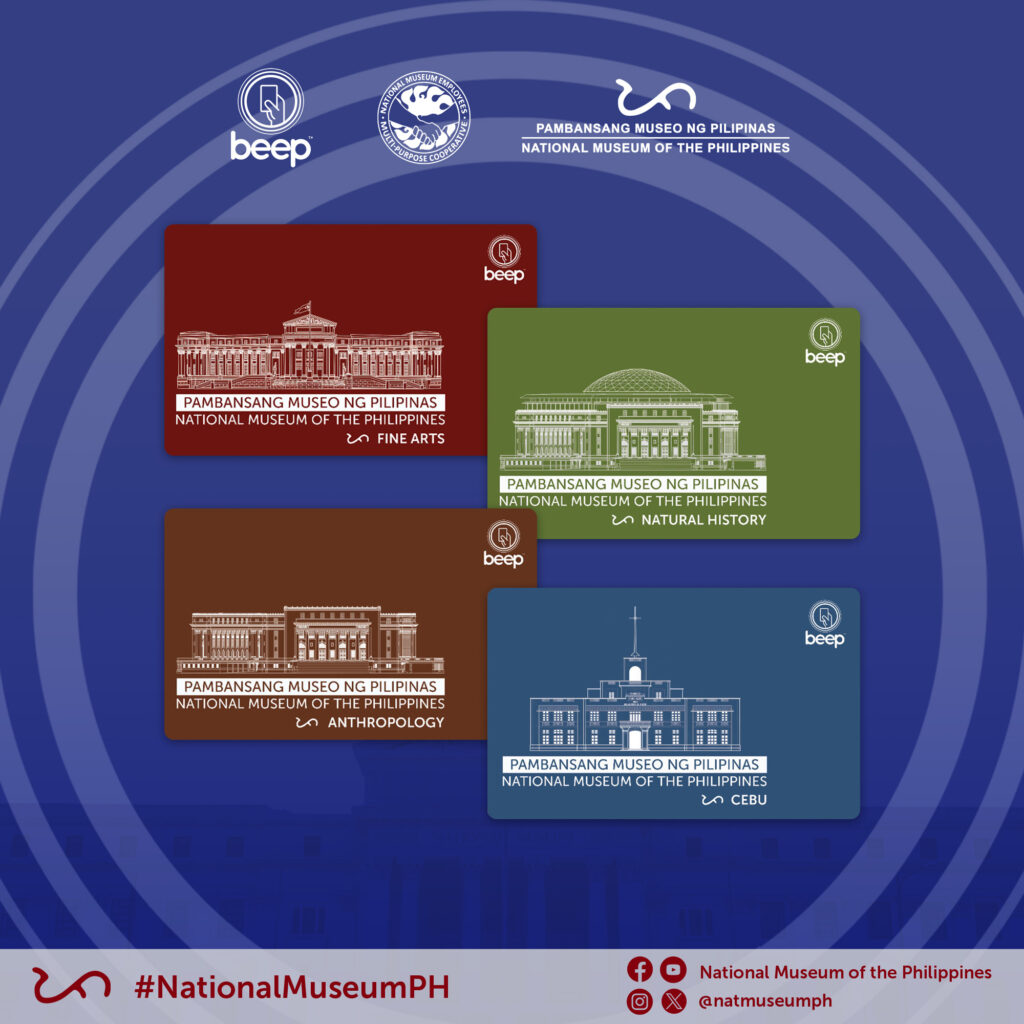The Manunggul Jar, Lolong, Lualhati and the Cebu flowerpecker were featured in four limited-edition smart cards released by the National Museum of the Philippines, through its National Museum Employees’ Multi-Purpose Cooperative.
The cards, created in partnership with Beep, provider of reloadable, contactless smart cards and a payment system, were made available to the public on 26 October in celebration of the National Cooperative Month and National Museums and Galleries month.
The cards are available in four colors and designs featuring the National Museum of Fine Arts, the National Museum of Anthropology, the National Museum of Natural History and the newly opened area museum in Cebu, and highlighting an icon of their collections or areas on the flipsides.




The National Museum of Fine Arts card in hematite red features Lualhati, the marble sculpture by National Artist Guillermo Tolentino of his the six-year-old daughter, while the National Museum of Anthropology card in brown color has the iconic Manunggul Jar, a secondary burial vessel discovered in a cave in Lipuun Point, Quezon, Palawan, dating to the late Neolithic period and declared National Cultural Treasure.
The green National Museum of Natural History card showcases Lolong, the saltwater crocodile caught in a creek in Agusan del Sur on 3 September 2011, considered then as the largest crocodile in captivity. It died on 10 February 2013 and its stuffed body and skeleton are on display at the museum.
On the other hand, the blue National Museum of the Philippines Cebu card features the endemic and critically endangered bird Cebu flowerpecker, which was thought to be extinct but was rediscovered in a forest in the central part of the island province in 1992. This card will be available for purchase on 14 November at the NMP Cebu.
Only 500 cards are produced for each design, priced at P400 for each card. Available exclusively at the museums the cards feature, the cards delighted the public that they were sold out in just a couple of days. The NM cooperative said they are grateful for the enthusiastic public response to the cards, which are their own way to promote the museums and encourage more visitors.
